How to Maintain Medium Heat on Electric Stove: A Guide to Electric Stove Cooking
Updated: 28 Jul 2024
596
In the domain of cooking, achieving the perfect temperature is often the secret ingredient to culinary success. Maintaining medium heat is essential for unlocking the flavors and textures of your favorite dishes.
In this guide, we’ll share some easy tips and expert advice for how to maintain medium heat on your electric stove and make your cooking skills even better.
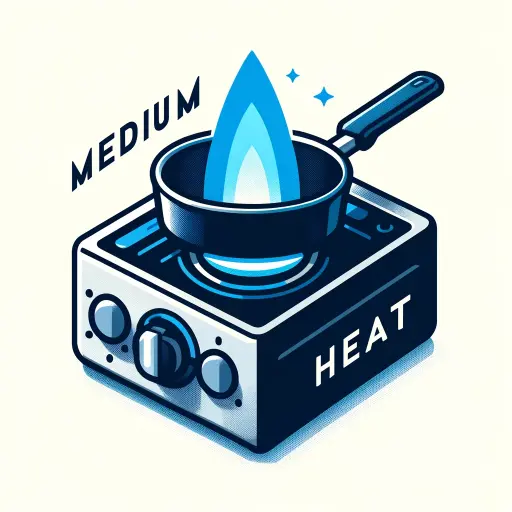
Using an electric stove can be a bit tricky because it doesn’t adjust the heat as quickly as gas stoves do. But don’t worry! with our comprehensive guide you can learn, how to maintain medium heat on electric stove and make your lives easy.
Understanding the medium heat on electric stove
Medium Heat
Medium heat is typically considered to be between low and high heat settings on the stove. It is characterized by a moderate intensity of heat that allows food to cook evenly without burning or scorching. Medium heat is commonly used for tasks such as sautéing, searing, simmering, and frying.
Regulations
Electric stoves regulate heat levels through temperature control settings, usually represented by numerical values or heat indicators. The exact number for medium heat on an electric stove can vary depending on the specific model and brand.
However, generally medium heat typically falls around the midpoint of the stove’s temperature settings, which is often indicated by the number 5 or 6 on a scale of 1 to 10.
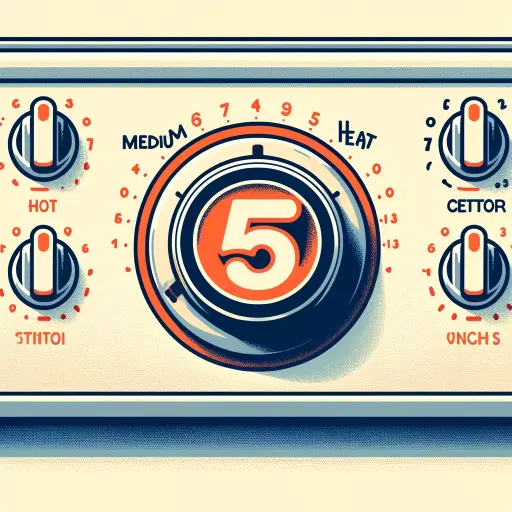
Different heat levels on electric stove
On an electric stove, the heat settings typically range from 1 to 10, with 1 being the lowest heat setting and 10 being the highest. Here’s a breakdown of what each setting generally represents:
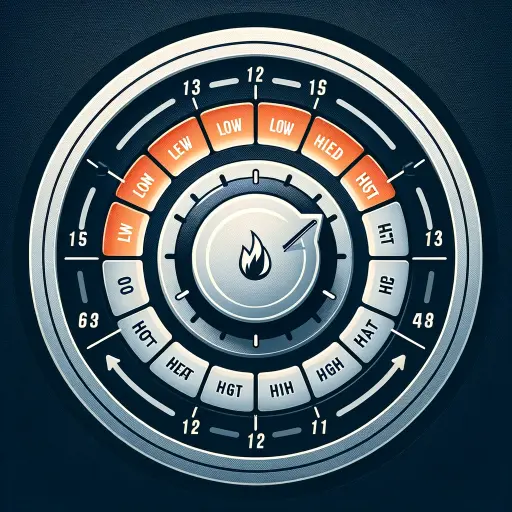
- Low Heat(1-3) This setting produces gentle heat, or keeping food warm without cooking it further.
- Medium-Low Heat(3-5) Slightly stronger than low heat, this level is ideal for slowly cooking ingredients like onions or vegetables.
- Medium Heat(5-7) This is the go-to setting for most cooking tasks, including frying, boiling, sautéing, and simmering. It provides enough heat to cook food without burning or overcooking.
- Medium-High Heat(7-9) Stronger than medium heat, good for quick cooking methods like stir-frying.
- High Heat(9-10) The highest setting on the stove, It generates intense heat and should be used with caution to avoid burning or scorching.
Guide to Maintain Medium Heat on Electric Stove
Here are some guides to maintain medium heat on electric stove:-
Gradual Adjustment
Start by turning the stove dial or knob to a low setting:
Begin by setting the burner to its lowest heat setting. This ensures a gentle start and prevents the cooking surface from getting too hot too quickly.
Allow the stove to preheat for a few minutes:
Let the burner preheat for a few minutes to reach a stable temperature. Preheating ensures that the entire cooking surface is evenly heated and ready for cooking.
Increase the heat gradually until reaching the desired medium setting:
Slowly increase the heat in small increments until you reach the desired medium heat level. This gradual adjustment allows for precise control over the temperature and helps prevent overshooting the target heat.
Preheating
Turn on the stove and allow it to preheat for 5-10 minutes:
Turn on the burner and give it sufficient time to preheat before adding your cookware. Preheating ensures that the cooking surface is uniformly heated, which is essential for achieving consistent results.

Monitor the temperature indicator or visually check for signs of preheating:
Keep an eye on any temperature indicators provided by your stove, such as a light that turns off when preheating is complete. Additionally, visually inspect the cooking surface for signs of heat, such as slight shimmering in oil or water.
Adjust the heat as needed to maintain medium temperature:
Once the stove is preheated, adjust the heat settings as necessary to maintain a medium temperature. This may involve fine-tuning the burner knob or dial to achieve the desired heat level for your cooking.
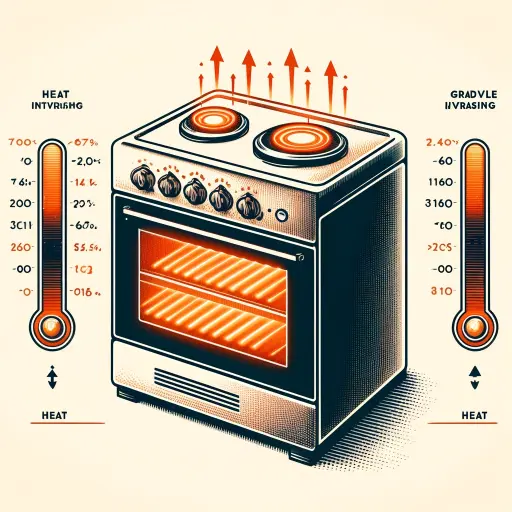
Testing Heat Levels
Use the hand test:

Hold your hand a few inches above the cooking surface to gauge the heat level. For medium heat, you should feel a moderate amount of heat radiating from the surface without it being uncomfortably hot. Be cautious not to touch the cooking surface directly to avoid burns.
Visual cues:
Look for visual cues on the cooking surface to assess the temperature. For example, when heating oil or water, you may observe a slight shimmer or movement indicating that the surface is reaching medium heat. These visual cues can help you gauge the temperature without relying solely on temperature indicators.
Factors Influencing Medium Heat Maintenance
Here are few factors influencing the medium heat on electric stove:-
Cookware selection
This is crucial as different types and sizes of cookware can impact how heat is distributed. For example, thicker materials may distribute heat more evenly, while smaller or unevenly sized pots and pans may result in hot spots or uneven cooking.
Environmental factors
Environmental factors also play a significant role. For instance, cooking in a hot and humid environment may require adjustments to cooking times and heat levels.
Stove type
The type of stove you use matters. Coil and smooth glass electric stoves may have differences in heat control mechanisms. Coil stoves may heat up and cool down more slowly compared to smooth glass electric stoves, requiring different techniques to maintain medium heat consistently. (Click here for knowing different stove types).
Benefits of Maintaining Medium Heat
Here are some benefits of maintaining medium heat:
Even Cooking
Medium heat allows food to cook evenly without burning or undercooking. It gives the food enough time to cook through without scorching the outside.
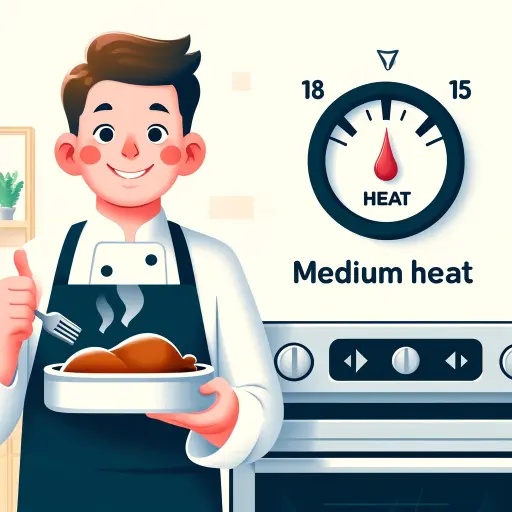
Preserves Nutrients
Cooking on medium heat helps retain the nutritional value of food by cooking it gently. High heat can destroy some nutrients, while low heat may not cook food thoroughly.
Enhanced Flavor
Medium heat allows flavors to develop slowly and evenly, resulting in a richer taste. It’s especially beneficial for dishes like soups, stews, and sauces where flavors need time to meld together.
Reduced Risk of Overcooking
Medium heat gives you more control over the cooking process, reducing the likelihood of overcooking your food. This is particularly important for delicate items like fish and vegetables.
Saves Energy
Cooking on medium heat consumes less energy compared to cooking on high heat. It’s a more efficient way to cook while still achieving delicious results.
Less Splattering
Cooking on medium heat reduces the likelihood of oil splattering and food sticking to the pan. This makes cleanup easier and keeps your kitchen cleaner.
Versatility
Medium heat is versatile and suitable for a wide range of cooking techniques, including sautéing, simmering, and gentle frying. It’s a safe bet for most dishes, making it ideal for everyday cooking.
Energy-Saving Tips
Cook Wisely: Medium heat saves energy and still makes delicious meals. Use medium heat for tasks like simmering, sautéing, and slow cooking.
Right-Sized Pans: Match your pots and pans to the size of your stove burners. This way, you use heat more efficiently and waste less energy.
Cover Up: When cooking, put lids on pots and pans. Lids keep heat and moisture in, so your food cooks faster and uses less energy.
Long-Term Effects of Wrong Heat
- Uneven Cooking: Food cooks unevenly, leading to some parts being overcooked while others are undercooked.
- Nutrient Loss: Vitamins and minerals degrade, reducing the nutritional value of food.
- Foodborne Illness Risk: Bacteria may not be effectively killed, increasing the risk of food poisoning.
- Texture Issues: Meat becomes tough and dry, and baked goods are dry and crumbly.
- Ingredient Waste: Ruined food needs to be thrown away, wasting ingredients and money.
- Inefficient Cooking: Wastes time and energy, increasing cooking times and energy consumption.
- Cookware Damage: Pans may warp or degrade, shortening their lifespan.
- Flavor Impact: Food may taste burnt, bitter, or bland, reducing enjoyment.
- Safety Hazards: Higher risk of burns, fires, and accidents due to improper heat use.
Conclusion
By understanding the importance of controlling heat levels and applying the techniques discussed, you can elevate your cooking skills and achieve delicious results every time you step into the kitchen.
We encourage you to experiment with the tips provided, adjusting heat settings and trying out different cooking methods to find what works best for you. Master the medium heat on your electric stove and don’t be afraid to get creative and discover new ways to enhance your dishes.
So, next time you fire up your electric stove, remember to keep it at a steady medium heat and watch as your cooking skills stand out!
FAQs
1. How can I tell if my stove is at medium heat?
You can gauge medium heat by observing the intensity of the burner’s glow or by using a thermometer. Medium heat should produce a moderate amount of heat without excessive
2. What happens if I use high heat instead of medium heat?
Using high heat can lead to burning or scorching of food, loss of nutrients, and increased risk of fires or smoke in the kitchen.
3. Can I use medium heat for all types of cooking?
While medium heat is suitable for many cooking tasks, some recipes may require higher or lower heat levels. It’s essential to follow the recipe’s instructions for best results.
Please Write Your Comments